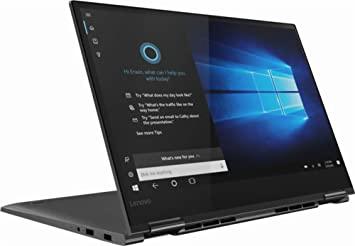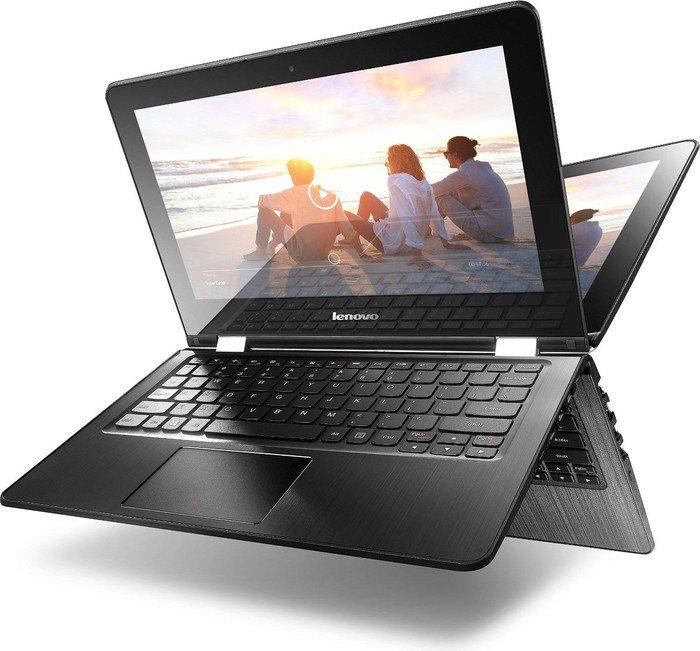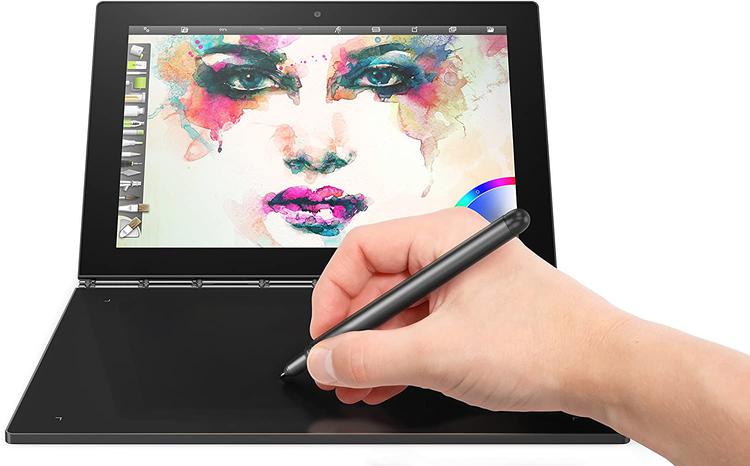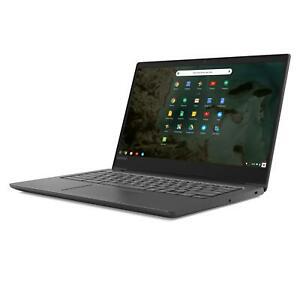Verdict
advantages
Decent performance for applications and games
Excellent exterior design
Comfortable ergonomics
Solid screen and speakers
Cheaper than its main competitor
Disadvantages
Dell XPS has more speed
Screen could be a little better
Battery life inconsistent
Important Specifications
Valuation Price: £1500
1.8GHz Intel Core i7-8550U processor
Nvidia GeForce GTX 1050 4GB Graphics
15.6 inch 3840 x 2160 screen
16GB DDR4 memory
512GB Samsung PM981 SSD
Windows 10 64-bit
360 x 249 x 17.15mm
1.89kg
1 year RTB warranty
What is the Lenovo Yoga 730?
The Yoga 730 is a new addition to Lenovo's lineup of hybrid devices. However, rather than being a smaller, slouchy machine, this £1,500 Yoga is designed for creative work.
Those impressive goals mean higher expectations for performance, screen quality, and battery life -- and they also put this 15.6-inch version of the Yoga in competition with devices like that
Dell XPS 15 2-in-1
.
Related:
Amazon Prime Day 2019
Lenovo Yoga 730 design and build
The Yoga 730 looks good, but the exterior isn't particularly eye-catching due to its professional design.
The Yoga 730's chassis is made of aluminum and finished in a dark hue Lenovo calls Iron Gray. There's a subtle Lenovo logo on the left side of the screen, slim bezels around the panel, and two simple hinges.
It looks like it's going to mean a deal, and it compares well to the Dell. It's more understated than the XPS' aging carbon fiber finish, and the Lenovo's webcam sits above the screen rather than below it You use yoga to conduct conference calls without giving people a good look in the nose.
Related:
Best Laptop 2019
The Yoga weighs 1.89kg, making it slightly lighter than the Dell. Its 17mm body is technically a millimeter thicker than the Dell, but no one will notice the difference. More importantly, the Yoga's build quality is just as good is like the XPS 15 2-in-1: the base is sturdy and the screen feels solid despite its small size. The 360-degree hinges are also strong -- and a little smoother than Dell's when moving the screen hinges.
I wouldn't think twice about putting the Yoga in a bag and I'm absolutely confident it will survive the frequent switching between laptop and tablet positions.
The Yoga has two full-size USB 3.0 ports and a Type-C Thunderbolt port. It also has a full-size HDMI output. Overall, I'd say these ports are a little more useful than those Connectivity options from Dell - the XPS has pairs of USB 3.1 Type-C and Thunderbolt 3 ports, but no full-size USB with no adapters and no HDMI.
A fingerprint reader sits under the keyboard on the Yoga like the Dell, but the Lenovo doesn't have a battery indicator like the XPS.
Lenovo Yoga 730 keyboard and trackpad
Both the Lenovo and Dell machines take a similar approach to the keyboard; they offer minimal travel to keep each system as slim as possible.
The Yoga's keys have little travel - imperceptible from the 0.7mm used on the Dell's magnetic keyboard - and the typing action is light and flat.
The keys press with an action that's a bit softer and less clinical than the Dell's snappy action. This makes the Yoga's keys quieter, but it also makes the Dell's typing a hair faster.
Make no mistake, the Yoga's keyboard is excellent, allowing you to float around keys and pound on documents quickly and quietly. However, if you prefer a more solid feel or a well-defined "snap" when typing, the Dell is better suitable.
The Yoga 730's keyboard doesn't have a number pad, which is a little irritating for a productivity-focused device -- even though the Yoga was built for creatives. Elsewhere, the layout is okay.
The trackpad is decent, too. It's wide, smooth, and responsive, with no sign of rubbing. The buttons are a little spongy, but you get used to it quickly.
Lenovo Yoga 730 screen and sound quality
I tested the more expensive of Lenovo's two 15.6-inch models. It comes with a 4K touchscreen, which thankfully keeps reflections to a minimum. It's also IPS, which is good for color accuracy. The Lenovo delivers, though a decent quality, but can not keep up with the Dell.
While its 300 nits brightness is great and good enough for office and outdoor use, the Dell managed 451 nits of maximum brightness. Lenovo combines its solid brightness with a reasonable black point of 0.26 cd/m², and these numbers give a contrast ratio of 1154:1.
Again, that's a decent number - enough for browsing and color-sensitive photo work. However, Dell goes one step further with a contrast ratio of 1,574:1. This number, combined with the extra brightness, means more punch and more vibrancy across the range.
Color is similar. The Yoga's color temperature is good at 6632K, slightly better than the Dell, but its average Delta E of 3.01 is mediocre. Importantly, the Yoga's screen is only 84.1% of the sRGB color space, 61.5% of the Adobe RGB color space and 68% of the DCI-P3 color space - while the Dell fixed the sRGB color space and 94.2% and 85.2% in the other two tests.
Those latter two numbers are important because they're critical to artists, filmmakers, and creatives -- the very market Lenovo is trying to target with this machine.
Overall, the Yoga 730's screen is decent - certainly good enough for less intense photo work and artistic tasks, as well as web browsing and document handling. However, if you need a screen for more precise and demanding creative work, Dell's XPS 15 2- in-1 more suitable.
The Yoga comes with a 4096-dot active stylus, which works very well. It's accurate and easy to use, just like the Dell device. Lenovo includes a small stylus holder, which isn't that impressive - it is a thin piece of plastic that occupies a USB port if you decide to use it.
The unit's speakers are excellent, though. They're punchy and well-balanced, with plenty of bass and plenty of clarity in the lighter parts of the range. For music during work or an after-hours Netflix binge, they'll get the job done with ease.
Related:
Best tablet

Lenovo Yoga 730 - Performance
The Yoga is powered by two interesting chips that take a significantly different approach than the Intel and AMD hardware found on a single chip in the Dell.
This more expensive model of the Yoga 730 packs a Core i7 processor. The i7-8550U is one of Intel's latest mobile chips and comes from the Kaby Lake Refresh lineup. This new lineup didn't change the architecture, but added more cores and a more efficient power management.
The i7-8550U in the Lenovo has four hyper-threaded cores, which benefits multitasking. They're clocked at a modest 1.8GHz, but Intel's improved Turbo Boost circuitry pushes the chip to a whopping 4GHz turbo peak .
The processor is paired with 16 GB of DDR4 memory, a 512 GB Samsung PM981 SSD and an Nvidia GeForce GTX 1050 graphics chip. It will have the power for graphic applications thanks to its 640 Stream processors and a clock of 1354 MHz. It also has 4 GB of storage.
Lenovo also sells a lower spec 15.6-inch Yoga 730. The $1100 model keeps the GTX 1050 but cuts memory and storage allocations in half. It also drops to a Core i5-8250U processor. This one Chip retains four Hyper-Threaded cores, but its 1.6GHz native and 3.4GHz turbo clocks are lower.
You'll have to spend a little more money to get those
Dell XPS 15 2-in-1
with equivalent specs. The £1699 model has a Core i5 processor with Radeon RX Vega graphics, while the £1849 version has a Core i7 chip but a 1080p screen. If you have a Core i7 and 4K panel it will cost you £2099.
Both processors in the more affordable Lenovo devices are low-power components, with a peak power requirement of just 15W. This is one of the key stats that highlights the difference between the Yoga and the Dell. The XPS uses a Core i7-8705G processor - with a higher standard speed of 3.1GHz, a turbo speed of 4.1GHz and a higher power consumption at 65W.
This chip also includes AMD Radeon RX Vega M GL integrated graphics designed for discrete chips like the GTX 1050. This built-in part has 4GB of memory.
Benchmarks prove that the Yoga is never far behind the Dell. Its single-core Geekbench score of 4351 is around 400 points behind, and its multi-core score of 14439 is only around 1500 points behind the Dell calculator.
device
PC Mark 8
Geekbench 4 single core
Geekbench 4 multi-core
Read Crystal Disk Mark
Write Crystal Disk Mark
3DMark Fire Strike
Lenovo Yoga 730 (15)
3309
4351
14439
3307MB/s
1873 MB/s
5156
Dell XPS 15 2-in-1
3404
4770
16055
2976.7MB/s
520.2MB/s
6276
In PCMark 8, the Lenovo notebook scored 3,309 points, less than 100 points behind the Dell. The SSD also helps here - its read and write values of 3307 MB/s and 1873 MB/s are fast enough to ensure fast boot and application load speeds to guarantee.
The Yoga might be a bit slower than the Dell on applications, but it still has the power and cores to handle multitasking and most work tools. Those who buy this machine for creative purposes certainly won't miss out on some extra punch.
The GTX 1050 is a reasonable graphics core, but not as fast as the integrated Radeon hardware in the Dell. In 3DMark Fire Strike, the Yoga scored 5156, while the Dell scored 6276 in the same test. This slower pace shows in games .
I managed to play Rise of the Tomb Raider on high settings and 1080p averaging 33fps, but you won't be able to run today's top titles without toning down the graphics settings. If you play eSports games, you'll be fine .
The Yoga is also a solid performer in the thermal area, which is certainly due to the CPU's modest power requirements. The outside always stayed cool, and it was also always significantly quieter than the noisy Dell, even during demanding work tasks.
battery life
The Yoga has a 51 Wh battery, which is smaller than the 75 Wh battery in the Dell. Still, the Lenovo's 15 W processor draws significantly less power than the 65 W chip in the Dell.
Unsurprisingly, this has a major impact on battery life. In the synthetic battery test, which repeats five minutes of video playback and ten minutes of web surfing at a screen setting of 150 nits, it lasted a staggering 15 hours - over nine hours at Dell.
If you're using the Lenovo for more conventional work tasks - web browsing, office apps, and drawing and creative tools - then you can easily use this device for a day. Even after work, there's more juice left over than the Dell has to offer.
However, squeezing the Yoga's components drains the battery faster. I ran a CPU stress test and the 15W processor and battery lasted just over two hours. During a gaming test, the 64W GTX 1050 reduced the Yoga's battery life just over an hour.
Why buy the Lenovo Yoga 730?
The Lenovo Yoga 730 is an excellent notebook that doesn't quite live up to its main competitor - but at significant savings, there's a solid argument to go with this device.
Ergonomically, it's solid. The build quality, hinge, and dimensions are all good enough to support heavy use in the field, and the keyboard and trackpad are both great -- though the former is a little spongier than the Dell.
The low-power Intel CPU and Nvidia GPU have enough grunt for most work tasks, although the Dell components are a bit faster. The screen has the quality for creative work - although the Dell performs slightly better in this regard too.
The Yoga 730 doesn't quite match the quality of the Dell, but it comes pretty close and saves a lot of money in the process. If you need a hybrid device for creative, productive tasks - and the Dell XPS 15 2-in-1 is beyond your budget - then it is the Lenovo Yoga 730 is an excellent alternative.
Verdict
The Lenovo Yoga 730 offers great ergonomics, a decent design, a solid hinge and comfortable keyboard, and an innards that will handle most work tasks. The Dell XPS 15 2-in-1 might have faster internals and a better screen, but that Yoga 730 is never far behind - with the benefit of being far more affordable.
This is how we test laptops
Unlike other sites, we test every laptop we review thoroughly over time. We use industry standard tests to properly compare features. We always tell you what we find. We never accept money to rate a product.
Learn more about how we test in our Ethics Policy.
Used as the main laptop during the test period
Tested for at least a week
Consistent benchmarks used for fair comparisons to other laptops
Verified against respected industry benchmarks and real-world usage
Trusted Score





